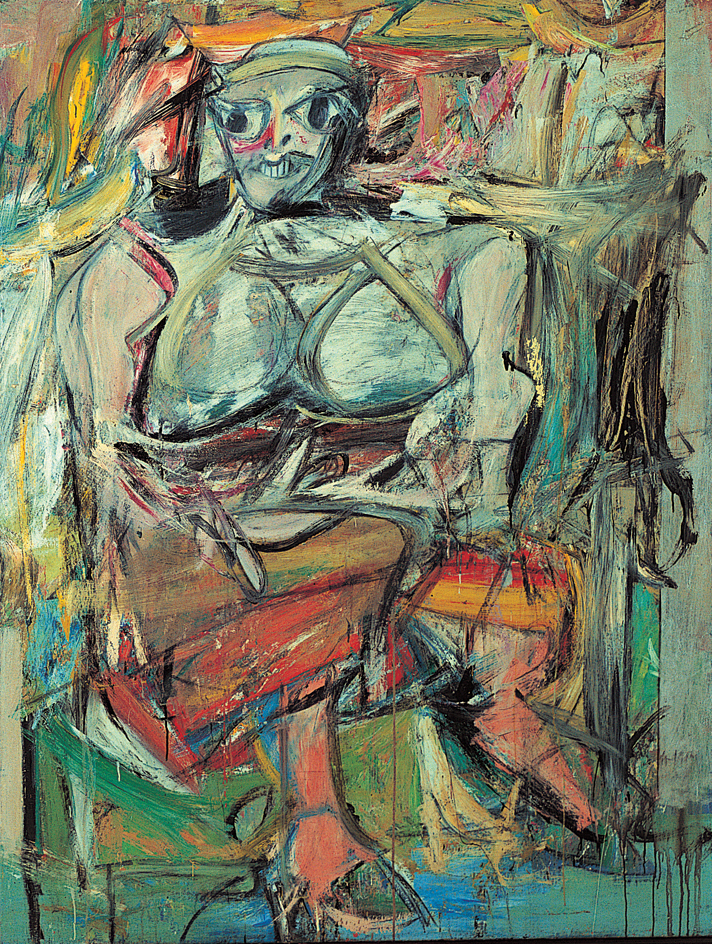De Kooning, << duh KOO nihng, >> Willem (1904-1997), was a leading Abstract Expressionist artist. He became best known for his hectic and violent paintings dominated by lunging brushstrokes, swirling paint patterns, and a strong emphasis on line. In later works, de Kooning simplified the surfaces of his paintings, sometimes working with purely linear patterns on coated, white canvas. However, the mood of de Kooning’s paintings and drawings is not always explosive. In his early tender portraits, his studies of women during the 1960’s, and other works, he showed skill with refined, delicate compositions and colors.
De Kooning was born in Rotterdam, the Netherlands, on April 24, 1904, and moved to the United States in 1926. He gained his first critical acclaim for his abstract paintings of the late 1940’s. Painted largely in black and white enamel, these pictures are composed of rhythmic curved lines mixed with oddly shaped flat planes. In 1953, de Kooning exhibited a series of oils and pastels titled Woman in which he appeared to present a primitive vision of woman as siren or dark goddess. Woman, I, is from this series. The exhibition inspired many younger artists to seek new ways of interpreting the human figure. Many later de Kooning paintings contain landscape elements and suggest huge spaces and outdoor light. He died on March 19, 1997.

